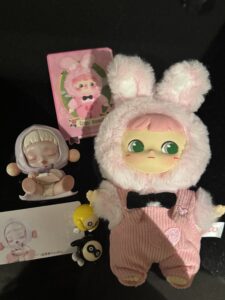The latest achievement of Pop Mart
Recently, Pop Mart has performed exceptionally well in global markets. Despite a tariff increase in the US, which raised prices from $22 to $28, long lines formed outside malls in Los Angeles. Its overseas market growth reached nearly 480%, with a year-on-year increase of approximately 900% in the Americas. As a Chinese trendy toy brand, Pop Mart not only weathered the tariff war unscathed but also broke through against the odds, a phenomenon that caught my attention.
Why did this phenomenon occur?
First, the product value and gameplay of Pop Mart are worthy of recognition. Its blind box concept, youthful aesthetic appeal, and IP storytelling inherently attract a broad audience. Personally, I am a fan of Pop Mart myself, drawn to its unpredictability and the thrill of opening a blind box. Consumers are willing to keep buying not because of the plastic figures themselves, but for the emotional experience they provide. For overseas users, another key factor is that Pop Mart showcases a new image of China’s creative industry. It is not merely a contract manufacturer or low-cost supplier but a brand with cultural depth, creativity, and global influence.

Secondly, in terms of overseas prices, Pop Mart offers good value for money. For example, after getting used to UK prices, I found that Pop Mart’s prices are twice as high as in China, but I am still willing to pay that price because my purchase was made in the local context, and the price is completely acceptable to me. For Europeans and Americans, such toys are even more “good value for money.”
Finally, against the backdrop of the tariff war, US retail giants like Walmart and Target have voluntarily absorbed part of the costs. For them, collaborating with China’s robust small commodity supply chain is more reliable and cost-effective than seeking new suppliers.
Conclusion
In summary, Pop Mart’s success in navigating the tariff war is the result of its unique product value, strong brand power, high-value emotional experiences, and the advantages of China’s supply chain. In the future, competition in the creative industry will not only be about products and prices but also about brand power, cultural influence, and the ability to establish emotional value that convinces consumers to pay a premium in global markets.


Leave a Reply